How to Jazz Up Your Bash Terminal — A Step By Step Guide With Pictures
- The Tech Platform

- Dec 11, 2020
- 5 min read
In this blog I’ll go over the steps to add Themes, Powerline, fonts, and powerline-gitstatus to make your regular Bash Terminal look beautiful and useful as shown in the picture above.
It turns out, if you are using Mac, you’ll need to jump through a lot of hoops to get this working as many instructions are for linux, or are out of date. So I thought I'd blog about it - hopefully it'll help you.
OK, by default, when you have a new mac, your Terminal.app will look something like below. Let’s go ahead and add Themes, fonts, and so on.
Step 1 — Add A New Theme
The first obvious step is to enhance the Theme. Terminal doesn’t provide all the cool and fancy themes that you see other developers use. Let’s download a Theme and add it to the Terminal.
In this blog, I’ll add Solarized-Dark theme to our Terminal.
Go to http://ethanschoonover.com/solarized
Scroll down and download the Theme (solarized.zip)
Extract the solarized.zip file
Open the osx-terminal.app-colors-solarized folder. This folder contains Theme for the terminal.
Double click “Solarized Dark ansi.terminal” file — This is the specific Theme file for Terminal.app. Note: If you get a warning that this is from an unidentified developer, Right-click on the file and select “Open with” > Terminal option.
At this point, you have the Theme installed into your Terminal. We just need to make it a default Theme.
Open Terminal > Preferences > Text and select the “Solarized Dark …” theme and click on “Default”.
From now on, your Terminal should like below.
Step 2 — Install Powerline
Powerline is a Python app and is a status line plugin for vim, and provides status lines and prompts for several other applications, including zsh, bash, tmux, IPython, Awesome and Qtile.
It makes the Terminal prompt look like below.
2.1 Install Python
Because Powerline is a Python app, we need to have Python and that too a proper version of Python.
MacOS comes with Python installed already. Ensure Python’s version is 2.7.x by typing python -V in the Terminal.
If it’s not 2.7, install Homebrew that allows us to install various software from the CLI, by running:/usr/bin/ruby -e "$(curl -fsSL https://raw.githubusercontent.com/Homebrew/install/master/install)"
Run brew install python to install the latest Python via Homebrew
2.2 Install pip — A package manager for Python (similar to npm)
Install pip by running the following command
$ sudo easy_install pip2.3 Install XCode Developer CLI tools
XCode Developer CLI tools are used by Powerline and other apps that manipulate core OSX features. So make sure to install the XCode CLI tools by running the following command.
$ xcode-select —-install2.4 Install Powerline
Finally, install the Powerline (stable version) via pip by running the following command.
$ pip install --user powerline-statusIf you want to install the latest development branch, then use:
$ pip install --user git+git://github.com/powerline/powerline //dev2.5 Add the Powerline daemon to bash
We now need to add the Powerline daemon to bash so that it can monitor the Terminal prompt and make changes.
2.5.1 Copy the Powerline’s installation location
You can figure out the location of Powerline by running the following: pip show powerline-status Copy the value from the Location field.
2.5.2 Add the daemon with a proper location to .bash_profile
Make sure you have .bash_profile file in your root directory. If not following create one by doing: cd ~ && touch ~/.bash_profile
2. Open .bash_profile and add the following:
export PATH=$PATH:$HOME/Library/Python/2.7/bin
powerline-daemon -q
POWERLINE_BASH_CONTINUATION=1
POWERLINE_BASH_SELECT=1
. /Users/rupa/Library/Python/2.7/lib/python/site-packages/powerline/bindings/bash/powerline.shSome details about bash_profile
2.5.3. Restart the Terminal
Completely quit the Terminal if it’s open (Terminal > Quit Terminal). And open it again.
2.5.4 Your new Terminal
Your new Terminal should look like below. It should be using “Solarized Dark ansi” theme and should show Powerline in the command prompt. But also notice that there are “?” characters! This is because Powerline uses various icons and fonts that are not available by default. So we need to install the fonts.
Step 3 — Install Powerline fonts
To install Powerline fonts, simply go to https://github.com/powerline/fonts. There you’ll see a whole bunch of folders. Each one is a font, aka “Patched fonts”.
3.1 Download the whole repo and unzip it
Click on the “Clone or download” button and download the whole repo so you try various fonts.
Unzip the fonts-master.zip
3.2 Install some fonts
Let’s open Meslo dotted fonts folder. It will look like below. You’ll see a whole bunch of .ttf file. Each one of them is a font but some are “bold” version of the font, some are “regular” version and so on.
Simply double-click on the .ttf file and press “Install font” to install the font on your computer.
For our case, let’s install “Meslo LG L DZ Regular for Powerline.ttf” and “Meslo LG L DZ Italic for Powerline.ttf”. This will add a regular and an Italic version of the Meslo font.
3.3 Select the font in the Terminal’s Theme
Remember we added “Solarized Dark” theme in Step 1? That didn’t have any fonts in it and MacOS had some default font. All we need to do is to set our Meslo dotted font for this theme and we are done!
Open Terminal > Preferences > Text
Select Solarized Dark ansi Theme
Click on the “Font” button — This opens up “Fonts” dialog
In the “Fonts” dialog, select “Meslo LG L DZ for Powerline” in the Family and also select font size 14 (so it’s easier to read).
3.4 Restart Terminal
Completely quit the Terminal (Terminal > Quit Terminal) and then reopen it.
Step 4 — Adding Git information to the prompt
In order to display various Git status at the prompt, we need to install powerline-gitstatus. It is a simple add-on to Powerline and adds multiple colors and Themes to display various git status information.
PS: We will be dealing with files in the “color schemes” and “themes” folders
4.1 Install powerline-gitstatus
pip install --user powerline-gitstatus4.2 Add powerline-gitstatus color schemes to Powerline
4.2.1 Open the following colorschemes/shell/default.json folder
${powerline-install-directory}/powerline/config_files/colorschemes/shell/default.json
//For example:
/Users/rupa/Library/Python/2.7/lib/python/site-packages/powerline/config_files/colorschemes/shell/default.json4.2.2 Add the following colors:
As mentioned in the powerline-gitstatus readme. PS: Just copy the colors inside “groups” and then append it to the default.json as shown below.
Here is my color schemes default.json (you may copy and paste this instead):
{
"name": "Default color scheme for shell prompts",
"groups": {
"hostname": {
"fg": "brightyellow",
"bg": "mediumorange",
"attrs": []
},
"environment": {
"fg": "white",
"bg": "darkestgreen",
"attrs": []
},
"mode": {
"fg": "darkestgreen",
"bg": "brightgreen",
"attrs": ["bold"]
},
"attached_clients": {
"fg": "white",
"bg": "darkestgreen",
"attrs": []
},
"gitstatus": {
"fg": "gray8",
"bg": "gray2",
"attrs": []
},
"gitstatus_branch": {
"fg": "gray8",
"bg": "gray2",
"attrs": []
},
"gitstatus_branch_clean": {
"fg": "green",
"bg": "gray2",
"attrs": []
},
"gitstatus_branch_dirty": {
"fg": "gray8",
"bg": "gray2",
"attrs": []
},
"gitstatus_branch_detached": {
"fg": "mediumpurple",
"bg": "gray2",
"attrs": []
},
"gitstatus_tag": {
"fg": "darkcyan",
"bg": "gray2",
"attrs": []
},
"gitstatus_behind": {
"fg": "gray10",
"bg": "gray2",
"attrs": []
},
"gitstatus_ahead": {
"fg": "gray10",
"bg": "gray2",
"attrs": []
},
"gitstatus_staged": {
"fg": "green",
"bg": "gray2",
"attrs": []
},
"gitstatus_unmerged": {
"fg": "brightred",
"bg": "gray2",
"attrs": []
},
"gitstatus_changed": {
"fg": "mediumorange",
"bg": "gray2",
"attrs": []
},
"gitstatus_untracked": {
"fg": "brightestorange",
"bg": "gray2",
"attrs": []
},
"gitstatus_stashed": {
"fg": "darkblue",
"bg": "gray2","attrs": []
},
"gitstatus:divider": {
"fg": "gray8",
"bg": "gray2",
"attrs": []}
},
"mode_translations": {
"vicmd": {
"groups": {
"mode": {
"fg": "darkestcyan",
"bg": "white",
"attrs": ["bold"]
}}}}}4.3 Activate The Theme
4.3.1 Open Theme’s default.json file
${powerline-install-directory}/powerline/config_files/themes/shell/default.json
//For example:
/Users/rupa/Library/Python/2.7/lib/python/site-packages/powerline/config_files/themes/shell/default.json4.3.2 Add the following to the default.json
{
"function": "powerline_gitstatus.gitstatus","priority": 40
}Below is my Powerline’s Theme default.json(you may copy and paste this instead):
Note: I have removed everything from the “right” section and also removed “job number” (“jobnum”) to keep things clean. Otherwise, you’ll see a little artifact on the right-hand side edge of the prompt.
{
"segments": {
"left": [{
"function": "powerline.segments.shell.mode"
},
{
"function": "powerline.segments.common.net.hostname","priority": 10
},
{
"function": "powerline.segments.common.env.user","priority": 30
},
{
"function": "powerline.segments.shell.cwd","priority": 10
},
{
"function": "powerline_gitstatus.gitstatus","priority": 40
}],
"right": []
}
}4.4 Restart the Daemon
Save the file and run the following: powerline-daemon —-replace in the Terminal.
4.5 Restart The Terminal
Quit the Terminal (Terminal > Quit Terminal) and open it again.
At this point, we are all done! whew! If you open the Terminal, and navigate to any git repo, and play around, it should look like the following.
Here is how it looks in Solarized-Light Theme:
Here is how it looks in Cobalt2 Theme:
Source: Medium



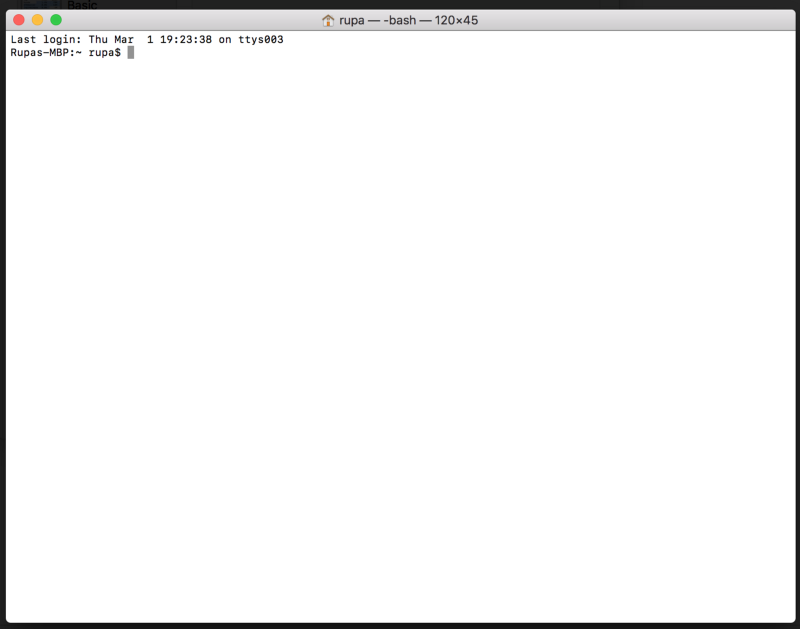



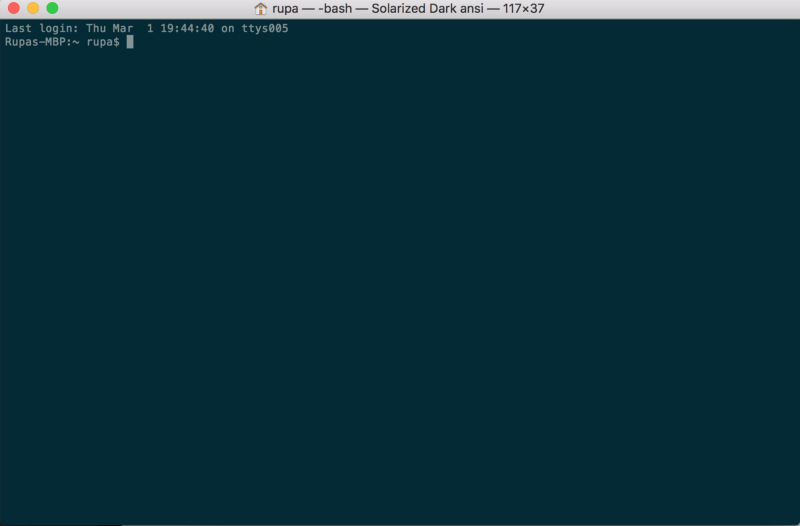







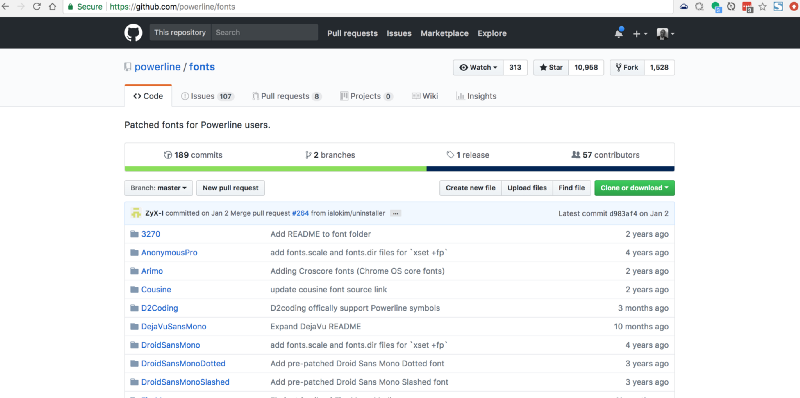



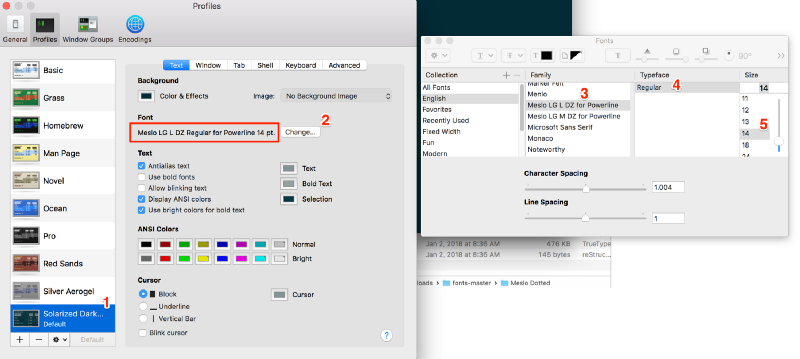

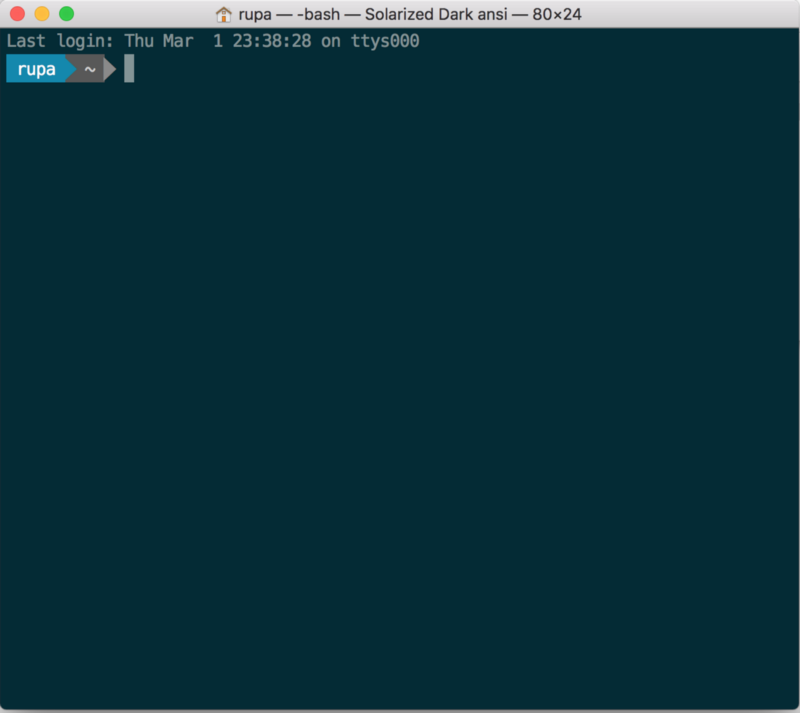


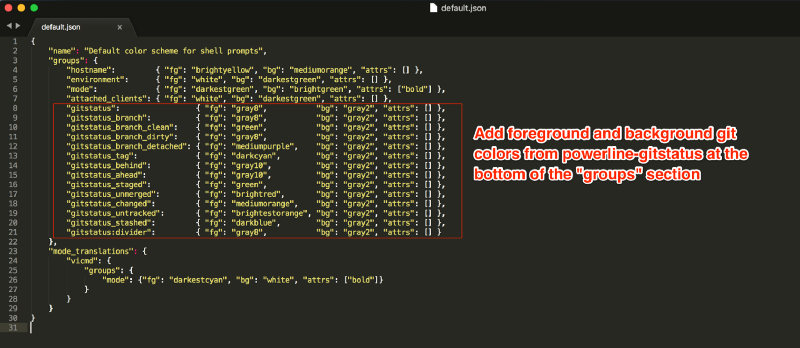








.